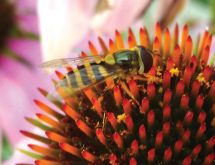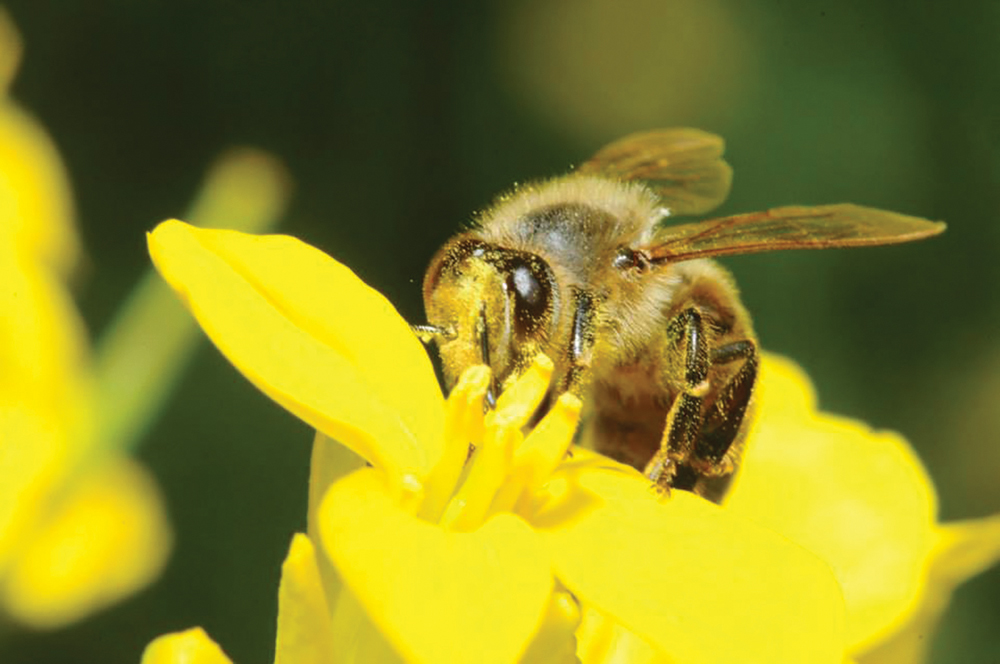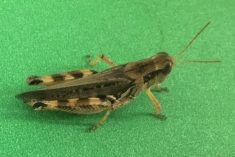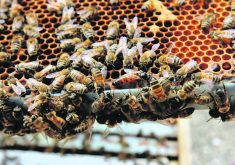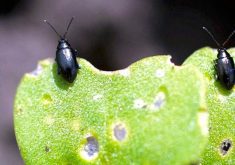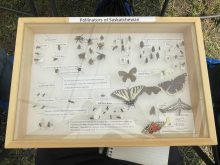Insecticides do a lot of good work in fields but they’re also a measure of last resort.
The first line of defence is frequently an unpaid and overlooked army of beneficial insects that protect the crop by feasting on its insect foes.
John Gavloski, Manitoba’s provincial entomologist, told a recent Crop Talk webinar that often when pest populations wax and wane, people credit environmental factors like moisture and heat, and assume weather is the largest or even the only factor affecting pest levels.
Read Also
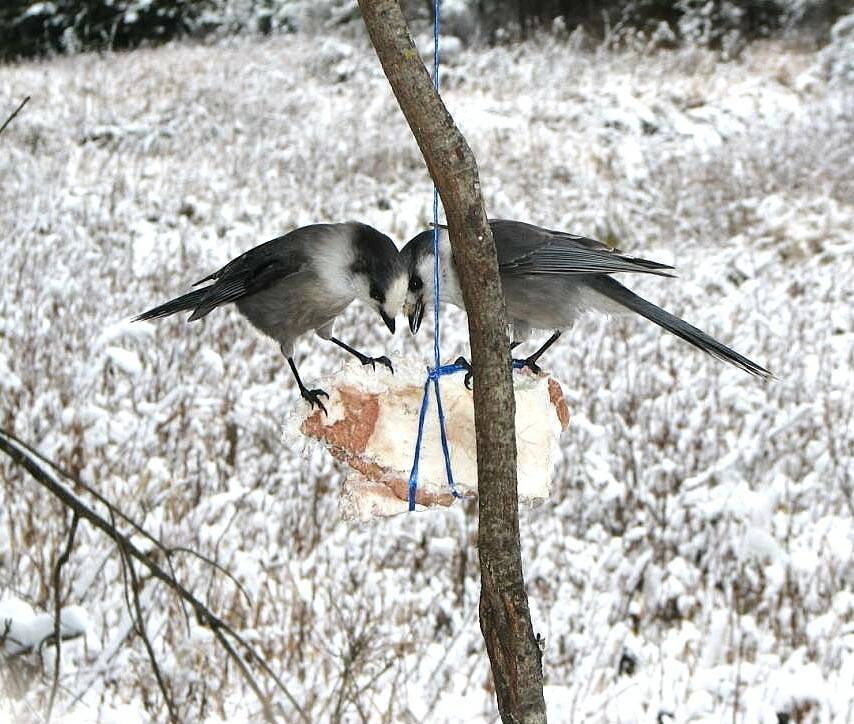
Hunting with whiskey jacks
Canada jays, or whiskey jacks, are bold little deer hunting pals that don’t mind getting close, if it means a piece of the offal or deer fat left over from a successful forest hunt in Manitoba.
“Another quite important one is their natural enemies, the beneficial insects that are eating our crop-feeding insects,” Gavloski said.
While he acknowledged the beneficial role played by pollinators, decomposers (bugs that feed on dung and plant material), and weed seed-eating bugs, his presentation focused on the many predacious and parasitic natural enemies of the bugs that cause economic damage to crops.
Hemiptera, or true bugs
“True bugs have sucking mouthparts. They don’t chew their prey, they put their beak in and suck the juice out of their prey, essentially,” said Gavloski, who singled out a few of the most important species for his discussion.

Minute pirate bugs found in Manitoba are generally just two or three millimeters long.
“You often see them on soybeans if you look hard enough, especially if there are soybean aphids, they like to come in and feed on the soybean aphids.”
Minute pirate bugs are small and don’t have the appetite of bigger beneficials, but they can still be helpful.
“It’s not their preference, but they can sustain themselves on plant sap or pollen if prey isn’t there,” said Gavloski. “They’re often one of the first predators on the scene when aphids start moving in.”
Damsel bugs are more voracious predators.
“They are very quick, and they are great at finding and tracking down prey, so they have a bit of a broader diet,” said Gavloski. “They’ve been noted as an important predator of the diamondback moth.”
As a testament to their appetite, Gavloski pointed to a study that found a single female can kill an average of 131 eggs and 95 diamondback moth larvae in 24 hours. However, that was in a laboratory setting.
“These were hungry, and they didn’t have to search for their prey,” he said.
He also said damsel bugs will often kill more prey than they eat, “so it doesn’t mean that they ate all 95 larvae.”
The last example in the “true bug” category is a predacious sub-family of stink bugs called Asopinae.
“I have seen these with their beaks into caterpillars before,” he said. “They will tackle caterpillars even much bigger than themselves, so they can certainly be helpful.”
Lacewings
There are two groups of lacewings, a brown and a green variety. Brown lacewings are common in forested or shrubby areas. They can also be found in shelterbelts.
Green lacewings are found throughout a field, and they feed on aphids, insect eggs and caterpillars.
“Their larva are really what does the most damage to the prey,” Gavloski said.
He describes a lacewing larva as looking like a little brown alligator.
“They are quite quick and able to track down and consume many different types of prey. They’ve got two sickle-like jaws, and they put those into their prey and inject digestive secretions into it. Then they basically suck up the juice.”
Gavloski said green lacewings have been seen feeding on diamondback moth larvae and cocoons. They also eat flea beetles, although those are likely a small part of the lacewing diet because flea beetles are elusive.

Beneficial beetles
Ground beetles, rove beetles and lady beetles are three of the most important beneficial beetles in Manitoba.
Ground beetles are diverse. More than 370 species have been recorded in Manitoba, and more than 980 species have been recorded across Canada.
“In any field that has not had a broad-spectrum insecticide application recently, you will find ground beetles,” said Gavloski, noting they will eat whatever they can catch.
“Some species will climb up the plants and feed on the eggs, larva and pupa of things like potato beetles.”

Other species spend more time at soil level.
“They’ve been found feeding on root maggots and things like that,” Gavloski said. “Even wheat midge larvae, when they drop from the wheat onto the soil, can be susceptible to ground beetles.”
An Alberta study showed they are also effective cutworm predators.
Rove beetles are a large and diverse group of beetles, with 390 species reported in Manitoba. They feed on insect eggs and root maggots, among other things.
“One study that was done here in Canada found that, on average, one adult of this species, Aleochara bilineata, consumed about 23 eggs or 2.6 larvae of root maggots per day,” said Gavloski.
Ladybugs, which are correctly called lady beetles, are a diverse group, with 66 species in Manitoba. They feed on aphids, insect eggs, and small caterpillars.
A study at the University of Guelph looked at feeding soybean aphids to different species of lady beetles. It found that the seven-spotted lady beetle, historically the most common species in Manitoba, on average can eat about 115 soybean aphids in 24 hours.
The coloured Asian lady beetle was accidentally introduced here and has recently challenged its seven-spotted cousin as the most dominant lady beetle.
“It’s the one that’s good at getting into your homes in the fall,” said Gavloski. These newcomers also have big appetites for aphids.
“If you start seeing a few lady beetle larvae or adults per plant, you’ve got a good thing going there.”
Beneficial flies
With more than 530 species in Canada and more than 6,000 species worldwide, the most common beneficial fly is the hoverfly.
As the name indicates, they hover over flowering plants much the way bees do.
“They’re very good bee and wasp mimics,” said Gavloski. “And they’re the second most important group of pollinators after the bees.”
But while their role as pollinators is important, the larva can be especially beneficial to farmers because they feed mainly on aphids.
“The adults usually lay most of their eggs right into aphid colonies,” Gavloski said. When the eggs hatch, the blind, legless hoverfly larvae emerge inside the aphid colony.
“They start tapping around with their tapered mouth parts. They will impale an aphid, hold it up, suck the juice out, plop it down, and then grab another one. They’ll just keep doing that.”
Parasitic wasps
Wasps get a bit of a bad rap because of the common yellow jacket wasp and its painful sting. But wasps are diverse, and most species cannot sting people.
“Most species of wasps are actually parasitic,” Gavloski said.
A parasitic wasp will lay eggs in many different types of hosts. One important wasp in terms of controlling diamondback moths is called Diadegma.
It doesn’t overwinter in Manitoba, nor does the diamondback moth. So when the diamondback is blown in from the south, it will often come with high levels of diadegma. The wasp lays its eggs in the diamondback larva, and eventually the larva will turn into a pupa but die before reaching adulthood.
Bachus flavesens is a moderately sized, orange-coloured wasp that lays eggs in the young larva of bertha armyworm. Studies done during one of the bertha outbreaks a few decades ago found that parasitism by Banchus flavesens could control about 40 per cent of the armyworm population.
“So when they’re abundant, they can have a big impact on some of the caterpillars that they’re attacking,” said Gavloski.
Aphid mummies
Aphidius ervi, a wasp native to Manitoba, is one of several parasitoids that leave the empty husk of an aphid behind as evidence of their work. These husks are commonly known as aphid mummies.
“After they’ve been parasitized, the aphid dies, but the aphid becomes a home for the wasp larva, so you’ve got a larva living in all these aphid shells,” explained Gavloski.
These wasps can be purchased as a biocontrol agent.
“They’re a great way of controlling aphids in greenhouse situations.”
Another parasitic wasp that has been successfully released in Manitoba is called Tetrastichus julis.
“The wasp was purposely released almost 15 years ago now,” said Gavloski. “We found an insect called the cereal leaf beetle, and it was a new arrival in Manitoba and a new potential crop pest.
“I sent a sample of these newly found beetle larvae to a colleague in Alberta, and we had zero per cent parasitism, which wasn’t a good thing.”
So, Gavloski’s colleague sent him some parasitic wasps.
“Right from year one, when we found these beetles, we started releasing parasitic wasps everywhere we found them.”
Gavloski stopped doing releases a few years ago but kept tracking parasitism rates in the larva of the cereal leaf beetle.
“Even years later, we were finding very heavy parasitism rates,” he said. And even in areas where he hadn’t released wasps, he found 50 to 60 per cent of beetles had the parasites.
Gavloski said he’s unaware of anyone spraying for cereal leaf beetles, so it seems the parasitism is keeping them at bay.
“Maybe someday the parasite levels will get low enough that the cereal leaf beetle will become an economic problem, but right now, the parasitic wasps seem to have them in check.”




